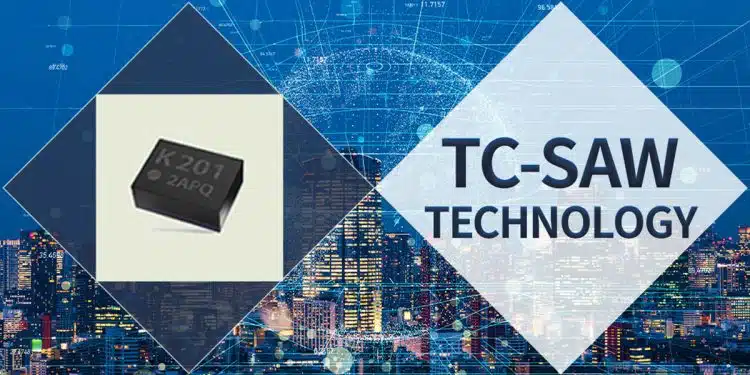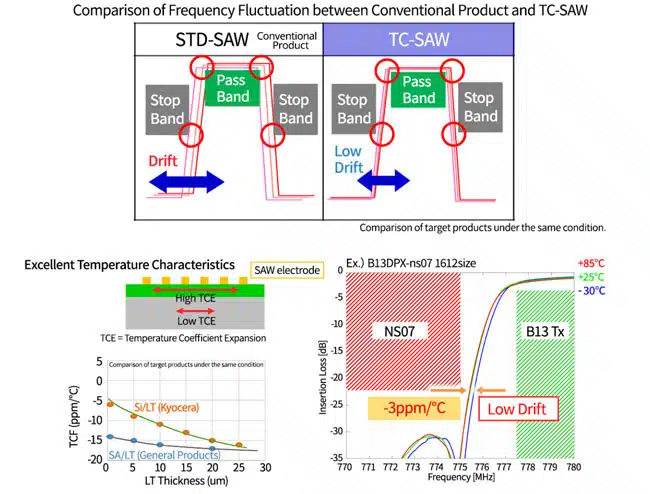KYOCERA Introducing TC-SAW filter technology for the telecommunications market. Kyocera’s unique technology provides high power resistance and excellent temperature characteristics.
One of the performance requirements for SAW filters is a small Temperature Coefficient of Frequency (TCF).
Kyocera has adopted its own TC-SAW technology (temperature-compensated SAW technology) in order to reduce the frequency fluctuation due to temperature change, i.e., the TCF is small. Kyocera’s TC-SAW achieves high power resistance and excellent temperature characteristics using a piezoelectric material structure and support substrate.
TCF is an abbreviation for Temperature Coefficient of Frequency, TCF indicates the amount of frequency transfer due to temperature.
Features
- Superior temperature characteristics: The structure of the piezoelectric material and the support substrate are bonded together, making it possible to deal with bands that could not be handled by the piezoelectric material alone.
- High power resistance: Actualized high-power resistance achieved by increasing heat dissipation.
Applications
- Telecommunications market
































